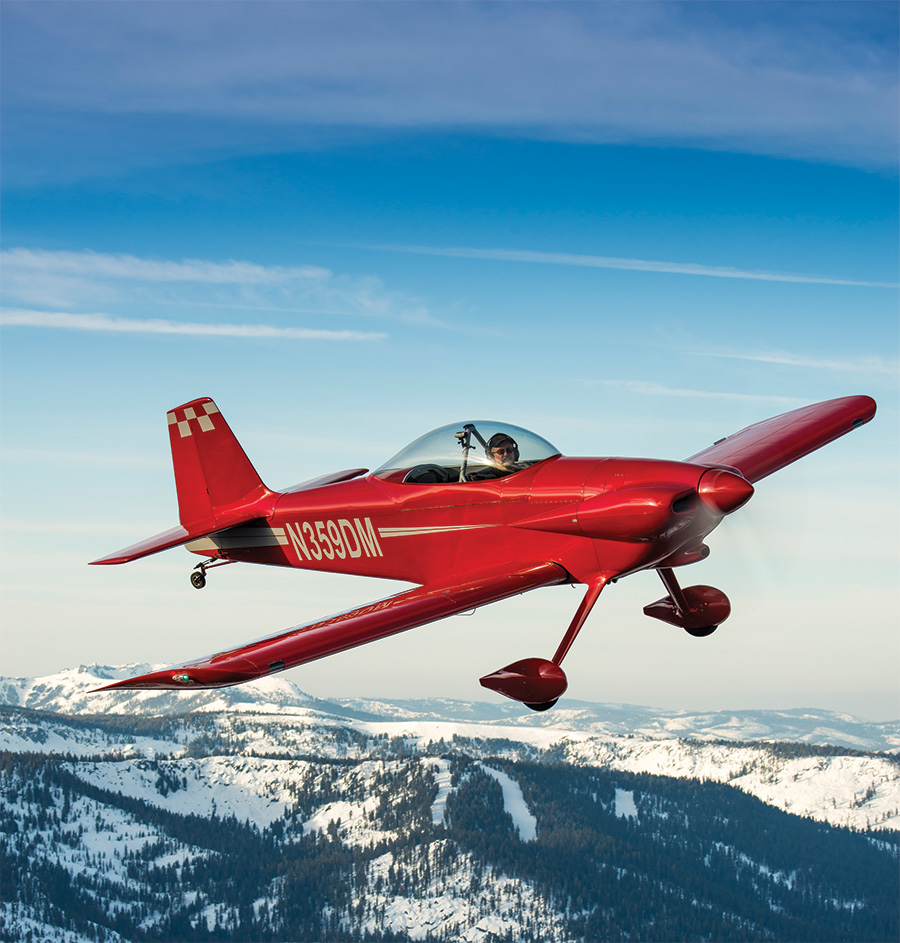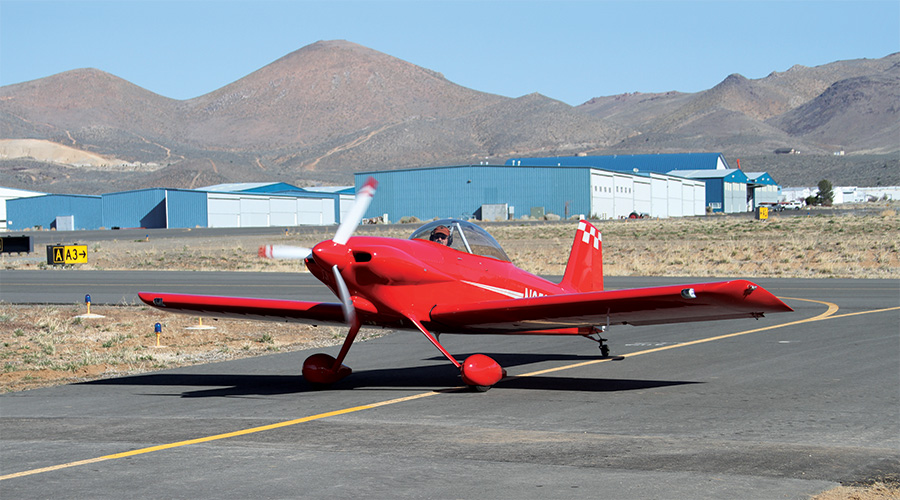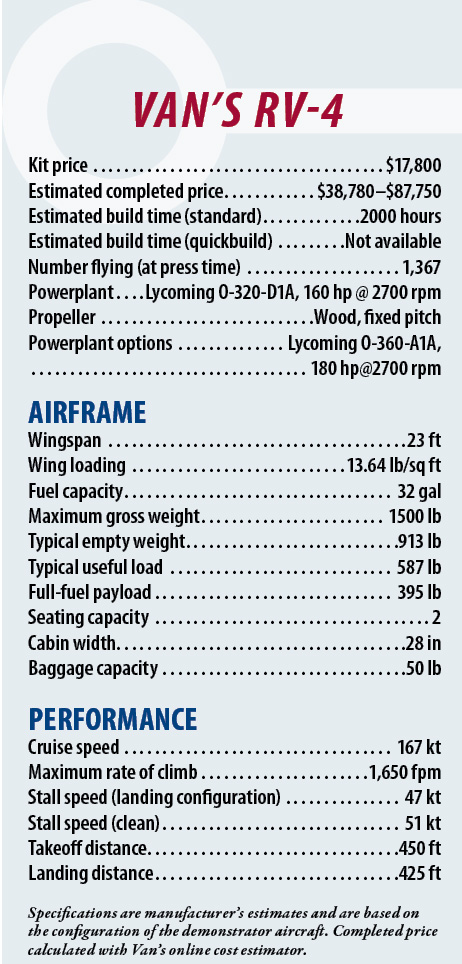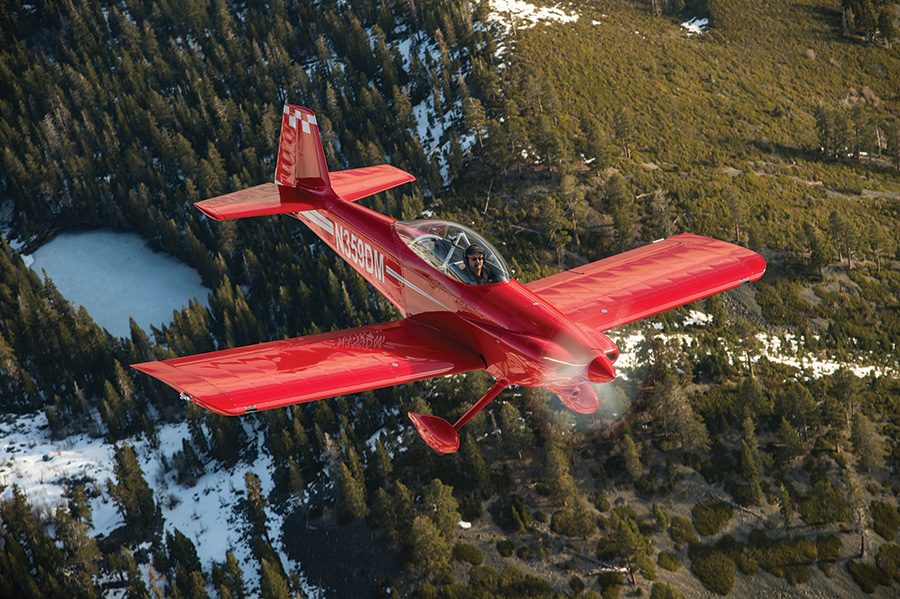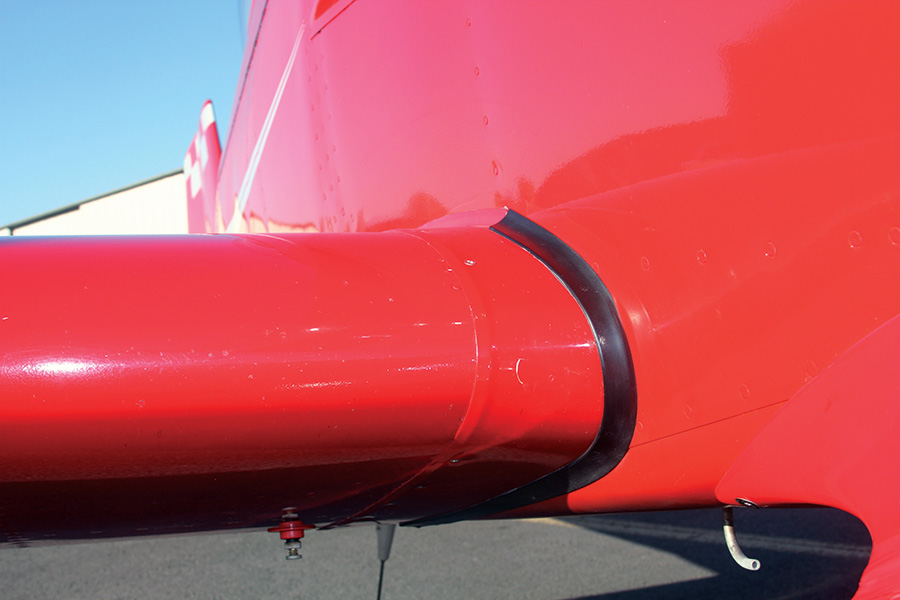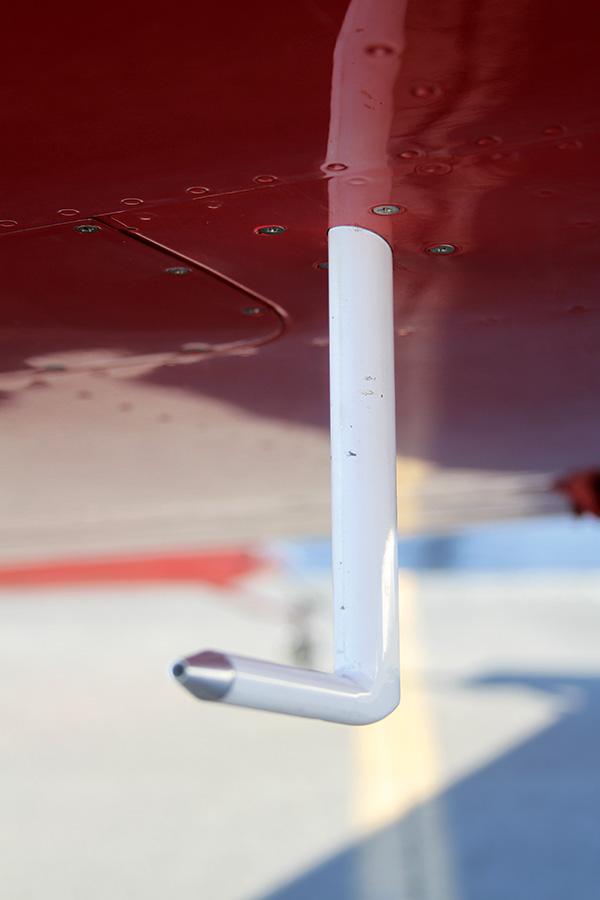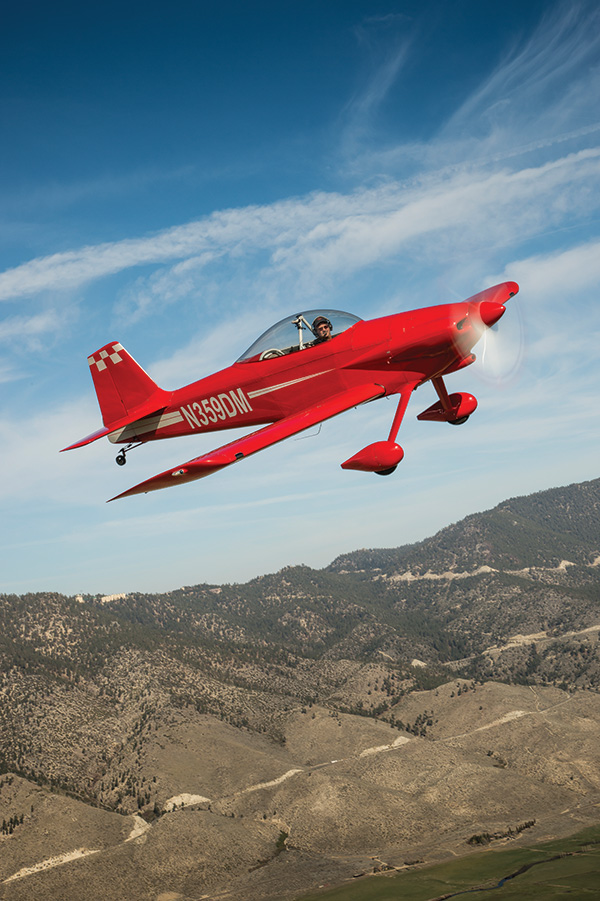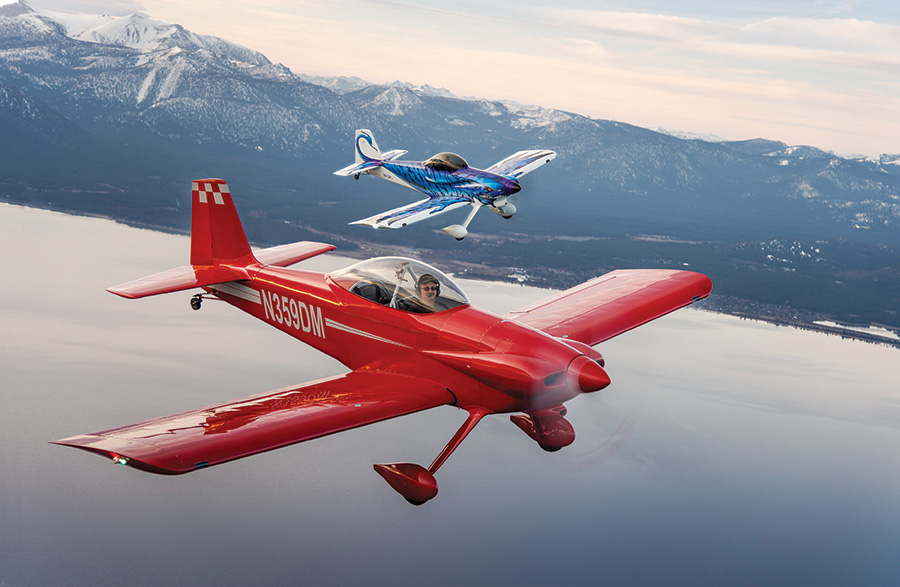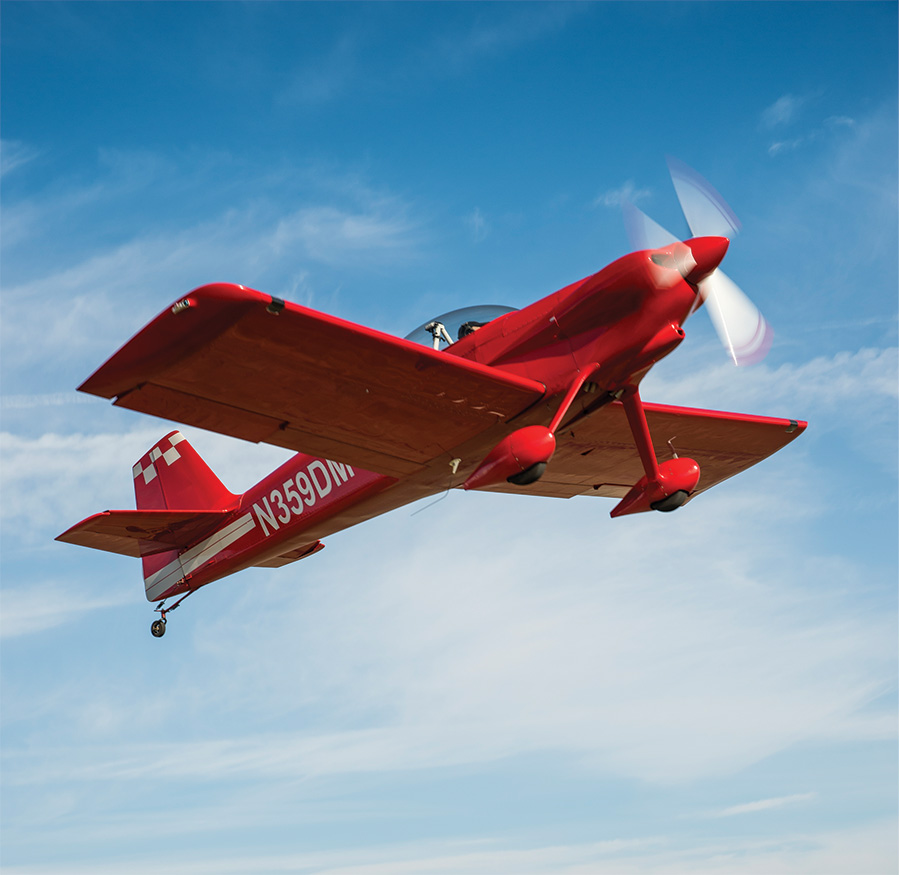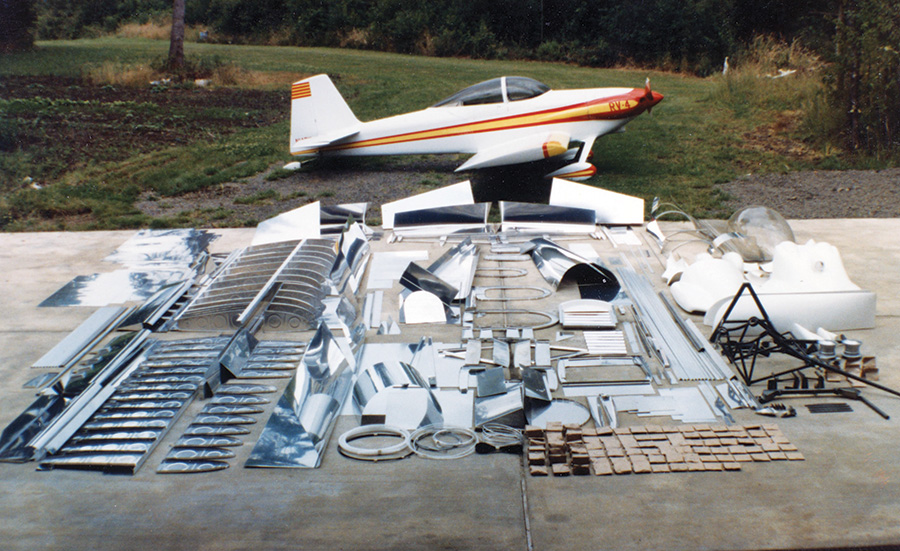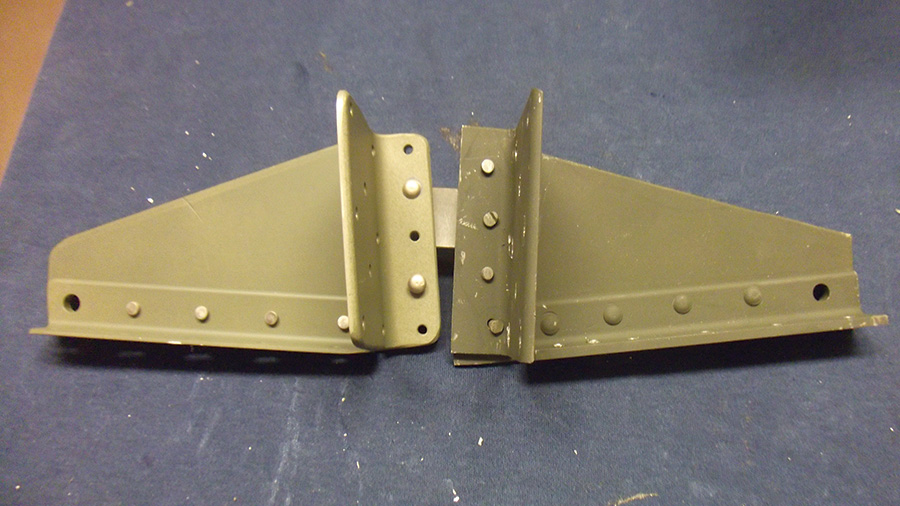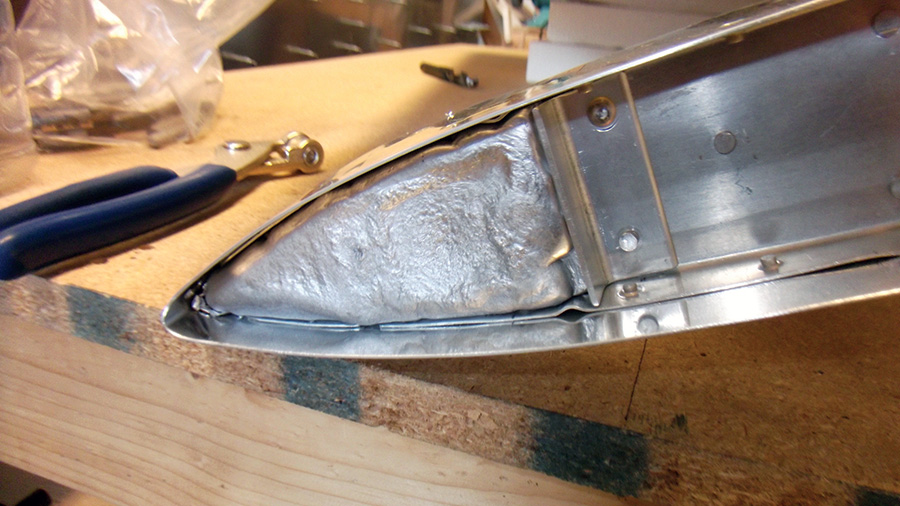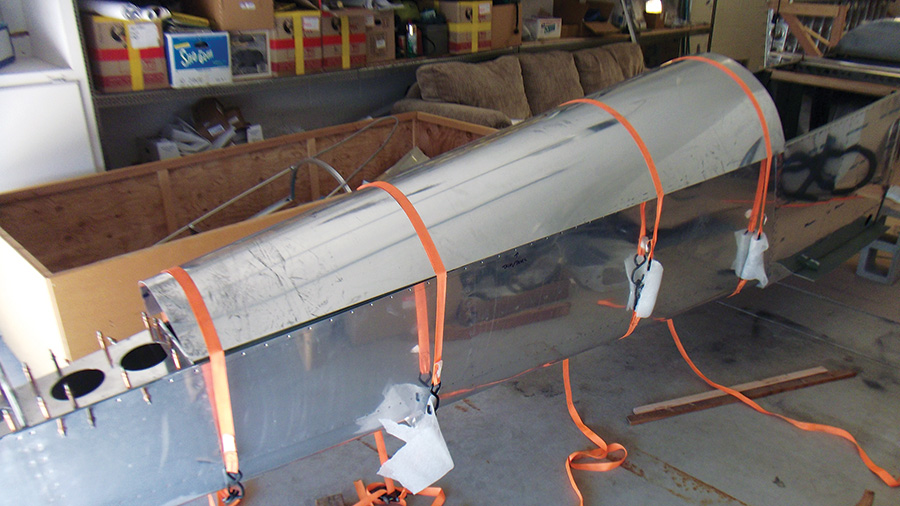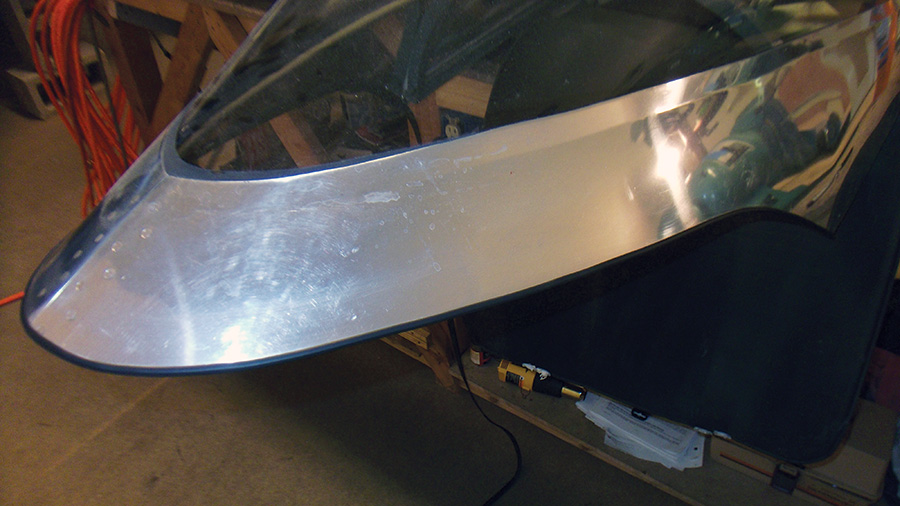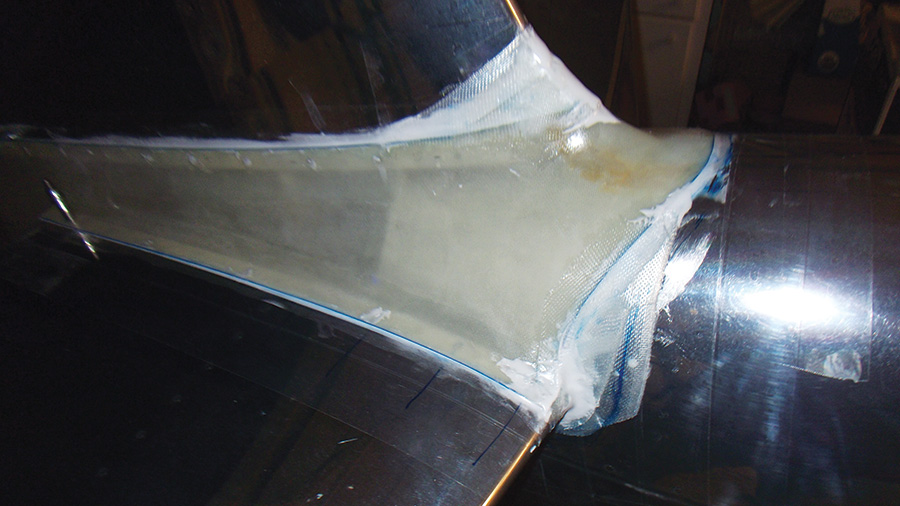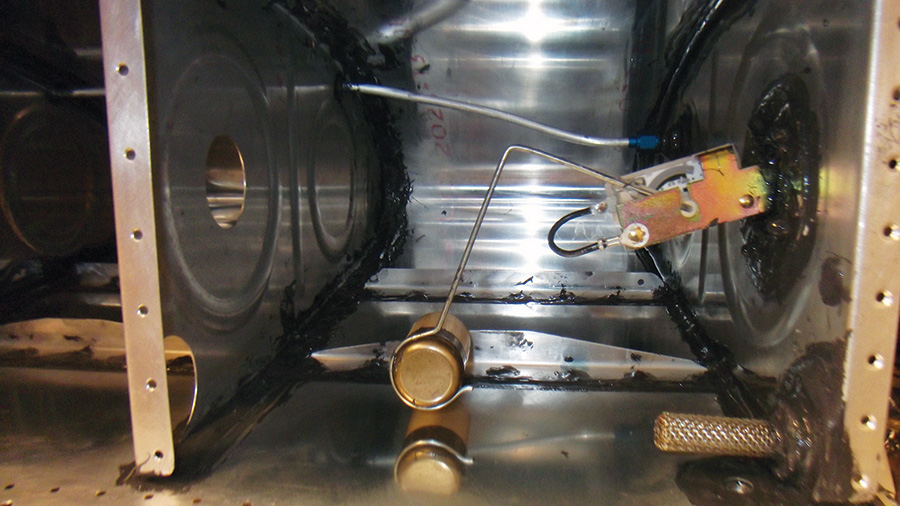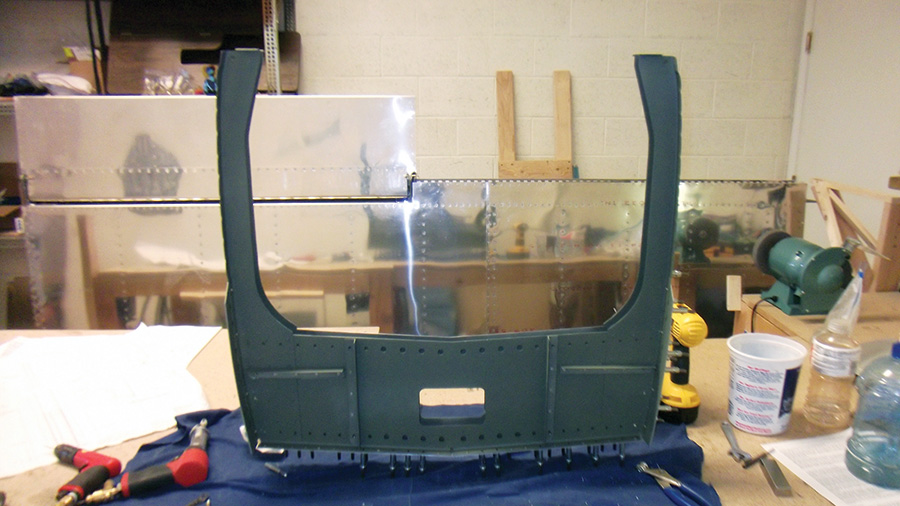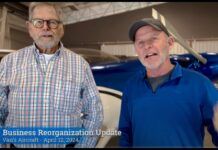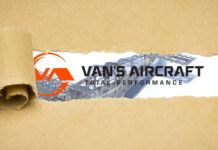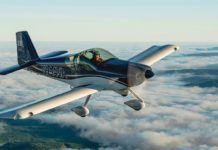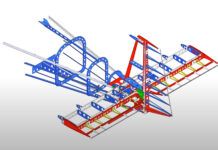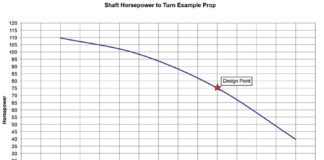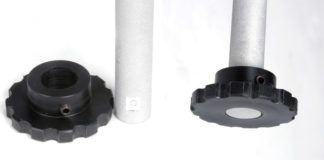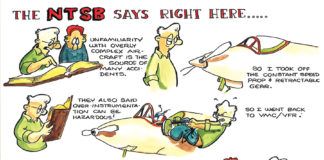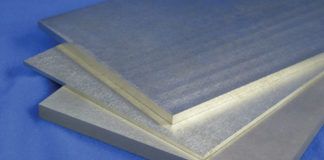Thirty-five years ago this month, the first two-seat aircraft to bear the RV moniker took flight. The RV-4 was more than just a stretched RV-3, and it went on to inspire a generation of builders who realized that while a single-seat airplane was a wonderful machine for a pilot, the future of spreading aviation was going to be with airplanes that could carry a passenger to enjoy the experience. More than a generation later, the RV-4 kit is still available, and it continues to be an exciting sport plane that is a delight to fly. According to Van’s Aircraft, as of May this year, 1367 RV-4s have been reported as completed and flying—that’s a respectable number for a kit that is not fully pre-punched, match-hole drilled, and requires jigging to build a straight ship. It’s old school. This month we take a look at this highly successful airplane from the early days of kit building—and remind potential builders that the kit is still out there if they want to experience what Van’s refers to as “total performance.”
Genesis
The RV-4 concept grew out of the original Van’s kit, the RV-3. Van’s Aircraft was, at the time, a very small company, working hard to produce plans and parts for the single-seat airplane that was astounding people with its performance and handling. Although very primitive by today’s kit standards, a reasonably competent builder could learn the skills necessary to construct the all-metal low-wing monoplane and enjoy a delightfully well-balanced machine when they were finished. The problem was that it was still a single seater, and while the fact remains that the majority of sport flying is done solo, having an extra seat that you can at least offer to a friend (or spouse) is a powerful draw when trying to justify building and owning an airplane on a working-person’s budget.
A modern RV-4 panel is simple to create with a single EFIS screen, a radio and transponder. Keeping it simple, light, and inexpensive is the goal for most RV-4 builders and pilots, and the latest VFR EFIS products are often cheaper than a panel full of gauges.
Once it was decided to build a two-seater, the first question had to be tandem or side-by-side. According to Van’s, a poll of prospective customers showed a strong preference for a tandem configuration, keeping the pilot on the centerline of the aircraft and keeping the frontal area as small as possible. While a casual look might suggest that Van merely stretched the basic RV-3 to create the -4, the truth is that the RV-4 was a clean sheet design, borrowing heavily on the experience of designing the -3, but using all new parts and several new design concepts.
Aileron trim is not required, but it sure can be nice in an airplane without an autopilot. This custom made trimtab has more authority than the factory spring-bias system, and was designed by the builder.
Similarities abound, of course. The flip-over bubble canopy was a simple and light way to give the pilot (and now the passenger) tremendous visibility all around. Gear legs attached to the engine mount made for easier structural attachment of the wheels. The pushrod control system came directly from the RV-3 and has survived in all of the RV models to date. Simple, sound structural design practices were carried along because they worked well and provided aerobatic structures at a minimal weight. The distinctive cheek cowls that enclose the cylinders, yet provide minimal volume are there on the -4 as well, causing some to confuse the two airplanes when viewed at a distance. The easy way to tell if the airplane coming up the taxiway is a -3 or a -4 is to look for the roll bar under the middle of the canopy—if there is one, then it is a -4 (the roll bar separates the pilot and passenger). If not, it’s a -3 (or someone left an important part off of their -4).
A professional machinist, Dayton Murdock has several unique pieces of hardware on his RV-4. This latch is used to secure the canopy in a slightly-open position for ground operations when extra ventilation is desired.
There are quite a few places, however, where differences can be found. Stand an RV-3 and RV-4 next to each other and the dimensional contrast is apparent. The RV-4 stands taller and looks bigger all around because it is—the wingspan is greater by three feet, and the chord is larger as well. The firewall structure on the RV-4 is more complicated than the flat plate on the -3, with a bump out for the pilot’s feet in the -4 providing a clever way to stretch the cabin for two without having to make it excessively long. The tail on the RV-4 sports balanced elevators that the RV-3 lacks, and is larger to boot. While today’s kit buyer for either airplane will find some shared components, such as aileron bellcranks and some welded bracketry, most of the parts for the two kits are unique.
While RV-3 tail kit sales are rare, Van’s reports that they still have people starting RV-4s on a regular basis—a testament to a good design that provides pilots what they want—a sporty two-seater in a smaller package than the RV-8.
Flying a Late Model RV-4
The RV-4 used for this report was built by Dayton Murdock of Carson City, Nevada, and is an excellent example of a recently-built aircraft with modern equipment and lessons learned from decades of previous RV-4s. The workmanship is excellent and evidence that the kit, while not pre-punched or match drilled, is mature. Equipped with an O-320, P-Mags, and a Catto prop, the firewall-forward installation reflects modern equipment that most builders would consider today. While some RV-4s sport constant-speed propellers, more often than not, you will find them simply equipped with a high-performance, lightweight, fixed-pitch prop like this one from Catto. Electronic Ignitions are likewise becoming more common, and reports of fuel savings on the nature of a half-gallon per hour, smooth starts, and smooth running are hard to beat. As a bonus, the ignitions work better with automotive spark plugs, which are far less expensive than the aviation plugs used with regular magnetos.
I flew Murdock’s airplane solo, with about half fuel, from Carson City airport, a field at an elevation of 4700 feet msl. Surrounded by mountains, Carson City is a great place to have the excess horsepower of most RVs—the altitude is hardly a factor, even in the heat of summer, since the airplane climbs reasonably well almost up to the beginning of the flight levels. This cool, late-winter morning, the temperatures were about 40 F at the surface and dropped to freezing at our test altitude. This made the atmosphere slightly lower than standard, and provided a good bite for some maneuvering and aerobatics.
Who says you can’t build complex curves in metal? These wingroot fairings were made the old fashioned way by the builder—stretching and shrinking for a perfect fit. Murdock’s canopy skirt is also aluminum, built per plans for a great fit.
Murdock recently switched the instrument panel to an all-EFIS cockpit. Equipped for day/night VFR with an AFS 4500 EFIS, a Garmin SL-40 for com, and a Garmin GTX-327 for transponder, the machine has plenty of what you need to have fun and fly comfortably on cross-countries using the mounted Garmin 396 GPS. He is considering adding an autopilot for longer cross-countries, but has taken it to Oshkosh several times without one and finds it a comfortable airplane to hand-fly.
A single short row of switches along the bottom of the panel controlled everything necessary for flight. Start-up was quick and simple, with the P-Mags providing a hot spark for a start after two of the three blades passed by the windshield.
Murdock builds and sells his own line of unheated—yet elegant—pitot tubes, so of course, his RV-4 sports one of them. These special touches are common in RV-4s—airplanes that invite customization because the kits themselves require a little more initiative on the part of the builder.
As taildraggers go, the RV-4 is a pleasure to taxi—there was no wind, but the airplane tracked true and solid, and the visibility over the nose was better than what most taildragger pilots have grown up with. The center portion of the cowl blocked the horizon, but it took only a couple of degrees of an S-turn to see over the cheek on either side, so you could effectively taxi straight-ahead and see most everything you need. I have found that cushion height has a lot to do with the over-the-nose visibility in the various RV-models, and a good view can generally be found before the pilot’s head hits the canopy. This RV-4 has the now-standard long gear legs, raising the nose just a little, but it was still better than what you see out of most RV-6s.
Simple fixed-pitch airplanes are a pleasure to fly because there is hardly any checklist to perform—a good CIGAR check will see you safely off, and that was the case here. The cool mountain morning lead to a quick takeoff and good climb rate of about 1500 fpm until clearing the pattern. Engine cooling was excellent, and even with a fairly steep climb, the CHTs all stayed below 380 F—and only hit that for a minute or two before pitching over to a cruise configuration. The handling of the RV-4 is solid and predictable, and the visibility is out of this world, with your entire head and shoulders in the bubble. Locating and avoiding traffic in the pattern is a piece of cake.
I checked the stability in all three axes with the expected results. Yaw returned instantly to center with no overshoot—RVs at speed are very stable in yaw. Rolling into a 60 bank and then releasing the stick provided a steady, 60 bank, with no tendency to steepen or shallow. In pitch, the airplane was slow in the phugoid, but definitely stable—with only a pilot, the airplane was in the forward quarter of the CG range and tended towards stable and a little heavy on the elevators. The tandem RVs are known to get fairly light in pitch with a heavy back-seat passenger, so builders err on the side of nose-heavy when solo to prevent surprises when two-up.
Next on the test card were stalls, and as Murdock said, they were pretty much Cessna-like. Although there wasn’t a lot of buffet, the stall was gentle and straight ahead—as soon as the nose dropped a few degrees, the wing was flying again. This particular -4 exhibited the gentlest of all stalls I have experienced in any of the RVs, and the nose never even dropped past the horizon with the power-off stall. The indicated airspeed at the break was 51 knots with the flaps up, and 47 with the flaps down.
Bringing the power back in, the next things on the test card were the commercial coordination maneuvers: chandelles and lazy eights. Both were simple, easier, and a blast with all of the power available. Moving on, it is almost impossible to make the eights “lazy” in an aerobatic RV—they tend more towards complete wingovers, and that is part of the fun. Keeping coordinated took a little more footwork than some of the other RVs, which tend towards naturally coordinating themselves. But there is nothing wrong with keeping a pilot on his toes to keep the ball between the lines, and the RV-4 is at least honest about it.
After these warm-ups, I proceeded to do some gentleman’s aerobatics: loops, rolls, and combinations thereof. Most of my RV aerobatic flying is done with constant-speed props—you can set the power level and leave the throttle alone, letting the governor prevent over-speeds as you head downhill. With the fixed-pitch Catto up front on the demonstration airplane, it took a little more attention than that—but not a lot. Aileron rolls, of course, were quick and, although not as light as in an RV-3, they weren’t as heavy as they are in the bigger -8. This airplane aileron-rolled faster to the right than to the left, coming all the way around in about a three-count (roughly three seconds) or maybe a little more. Flying at an altitude of 9,000 feet with the thinner air, I thought this was just fine. I started a loop from level flight and drew a nice round figure (no one was watching, so that’s what I am claiming) with no buffets of impending stalls in the thin air. This is a great sportsman aerobatic machine overall—not as nimble as many, but very forgiving to those learning the craft. Pulling up into a parabolic arc entry, then rolling over on the back to go over the top inverted, the mountain landscape of the Carson Valley spread out in the big bubble. I enjoy the fact that such airplanes exist to give us the complete freedom of the skies. As with all slick RVs, care must be taken on the down lines not to build up too much speed, and aerobatic instruction is recommended for those transitioning from airplanes with more drag.
The well-mannered RV-4 maintains its reputation in the airport pattern. It is easy to spot traffic and to slow down (with a little planning); and hitting low key, opposite the numbers, just as you touch the top of the white arc is not difficult. I dropped the flaps all the way at that point, idled the engine, and played the turns to base and final to touchdown right on the numbers in a nice three-point attitude—no effort. This airplane really makes a taildragger pilot look good! It is often said that the RVs are the pussycats of the conventional gear world, and aside from the difficulty I have in repeatedly getting good landings in the -6, I can’t complain about any of them. The flare comes naturally, and whether you end up in a tail-low wheelie or a three-pointer, so long as you don’t force the airplane to do something it doesn’t want to do, it will all turn out all right. Directional control is hardly exciting at all—the airplane goes where it is pointed.
I made the first landing a touch-and go, retracting flaps and adding power as I slowed down past 40 knots. Before I could get all the throttle back in, I was up and away for another go. The next time around the pattern was a low pass for some photography, and the airplane is well behaved at speed above the runway. Pulling up into a final turn around the patch, I set up for a steep descent and a three-point landing. I touched down under good control, then had to add power because I had a long way to go to get to the next taxiway turnoff. As many have discovered over the years, with good speed control on the part of the pilot, these are great short-field airplanes.
All in all, I place the RV-4 squarely in the middle of the spectrum between the RV-3 and the RV-8 (the two other centerline-seating RVs). All three are remarkable airplanes, guaranteed to delight any pilot looking for a quality flying experience. The RV-4 is more maneuverable than the -8, less so than the -3, but if you want to have the option of taking someone along on a breakfast run, the -3 is out of the picture. For average local flying, solo or two-up, it would be hard to beat the qualities of the RV-4.
Buying a used RV-4
Because the RV-4 has been out in the world for 35 years, there are many available for resale. A large number of the original builders have reached the age where they are no longer flying, and many fine examples of the model can be found for sale at any given time. As we all know, there are people who like to build, people who like to fly, and a few that like both equally well—but for those who would rather fly than build (especially a non-pre-punched kit), the availability of used RV-4s is wonderful news.
As with any aircraft purchase, careful attention must be paid to a pre-purchase inspection. Because these are Experimental and hand built, no two airplanes are alike, and details often vary considerably. As always, careful attention should be paid to overall workmanship. The first thing to check would be shop rivet heads—are they properly formed and uniform throughout the airframe? Rivet heads tell you a lot about the skill and attention to detail of the builder. Because so many of the airframe parts have to be fabricated from raw stock, take a look at skin lines—are they straight and do they nicely match their neighbors (if butt-jointed)? How about aluminum angle stock that is shaped into brackets and longerons—are the ends nicely trimmed and free from tool marks? Do the fiberglass fairings and tips look nicely matched and finished (many of the early parts took a lot of work on the part of the builder to get right)?
Open the canopy and look at the raw edge of the Plexiglas (behind the skirt)—is it nicely polished, or are there tool marks and/or scratches? Does the skirt fit tightly when closed? Most -4s use aluminum skirts per the original design; many later ones are using fiberglass parts created by the builder because the aluminum ones can be hard to fit. If an aluminum skirt fits well, you have a fine example of the builder’s art. How about the empennage fairing—does it fit nice and even to both the vertical and horizontal stabilizers? What about the lower rudder fairings—these are all quick places to check on a builder’s attention to detail.
It is a good idea to look at several examples of RV-4s to get an idea of what is built to plans and what might be created by an individual. In any case, investing in a set of preview plans from Van’s is not expensive, and if you show up at a pre-purchase with your own set, well-studied, it will let a buyer know you have done your homework.
Inspecting systems installation is the same on an RV-4 as it is on just about any other airplane. Look for well-made hoses, a lack of significant leaks, well-restrained wiring and plumbing—everything that makes the firewall-forward area neat and tidy. Probably a majority of RV-4s have simple systems that are easy to inspect. Some later models, or those that have been upgraded, might take a little more time and care to make sure that everything works and is shipshape. Lots of -4s have add-ons like smoke systems; check for leaks, function—and take a careful look at the weight and balance. As with any homebuilt, be sure to get the builder to explain the systems—wiring and plumbing—in detail. Many people take the creativity allowed in Experimental aviation quite literally and do things differently in a break from tradition. A dark and stormy night is no time to discover that fuel doesn’t flow the way you thought it would.
What should you look for on RV-4s in particular? Many early models developed wrinkles in the lower corners of the firewall, mostly from hard landings; this is a place you want to look carefully. Take a look at the tailwheel and see if it is the original, or has it been upgraded to a modern steerable/swiveling model. Take a good look at the aft fuselage skins to make sure that hard landings on the tail haven’t bent anything—subtle wrinkles or bulges will tell you if the lower fuselage has been tweaked sideways.
As with any used aluminum airplane, look for wear at cowl and fairing attach points—fiberglass can wear holes in aluminum over time, and it is good to look for this. Take the wheelpants off and check the brake lines—early models used plastic tubing, later ones used aluminum. Either one can develop wear spots that could lead to a loss of brakes if they let go under pressure. Early model RVs frequently used sloshing compound to seal the fuel tanks—this has been found to flake off after a number of years, causing debris that can block fuel pickups and lead to fuel starvation. Look into the tank fillers with a flashlight and see if there is evidence of slosh—removing it is a doable, but painful process, and needs to be taken into consideration when buying an older ship.
Overall, a used RV-4, built to reasonable standards, is a great investment in a fun and useful aircraft. Most are built well, and the ones that aren’t are not hard to spot when you get up close. Used RV-4s are frequently advertised on the web site www.Vansairforce.net, in Trade-a-Plane, or on www.Barnstormers.com.


